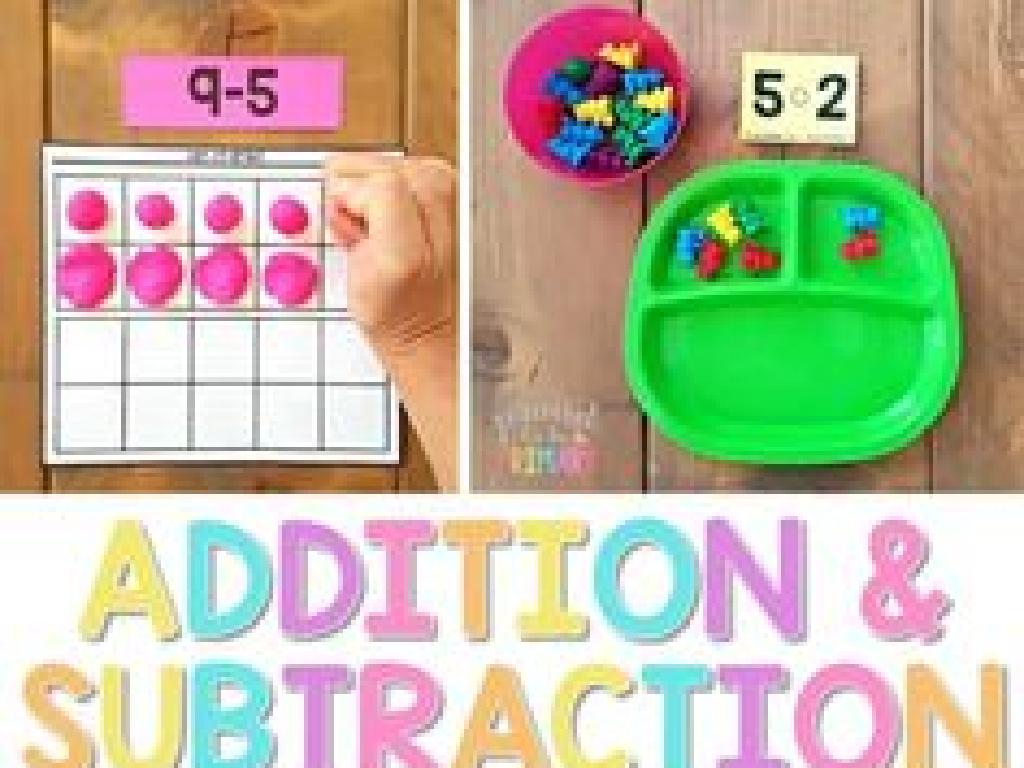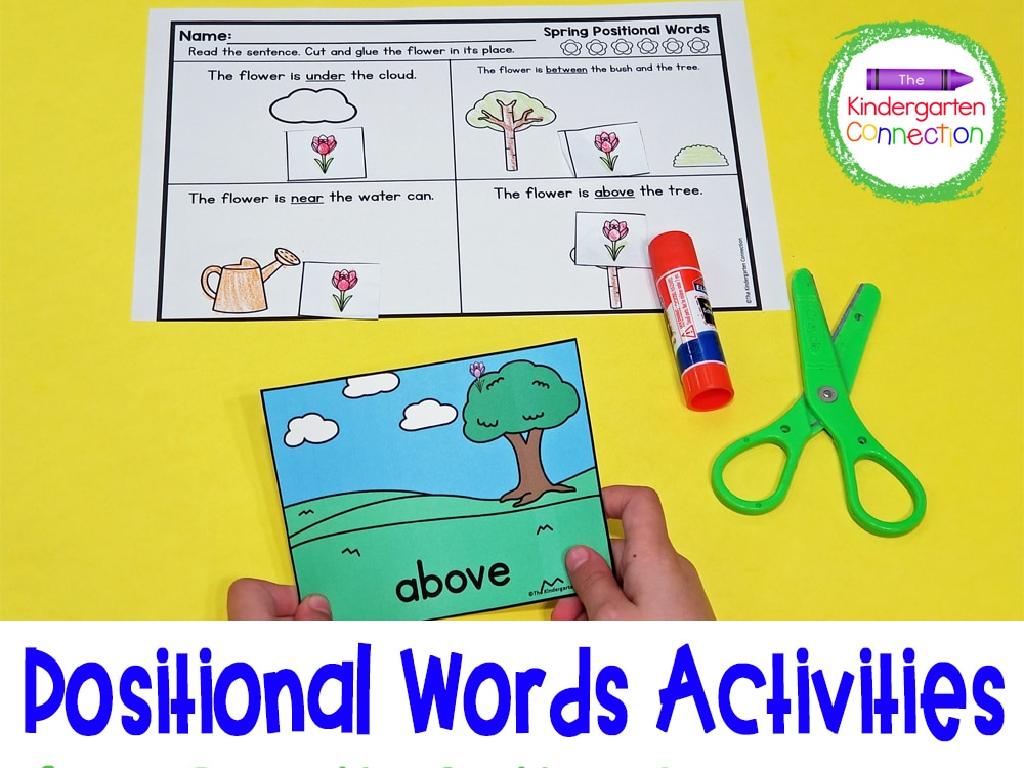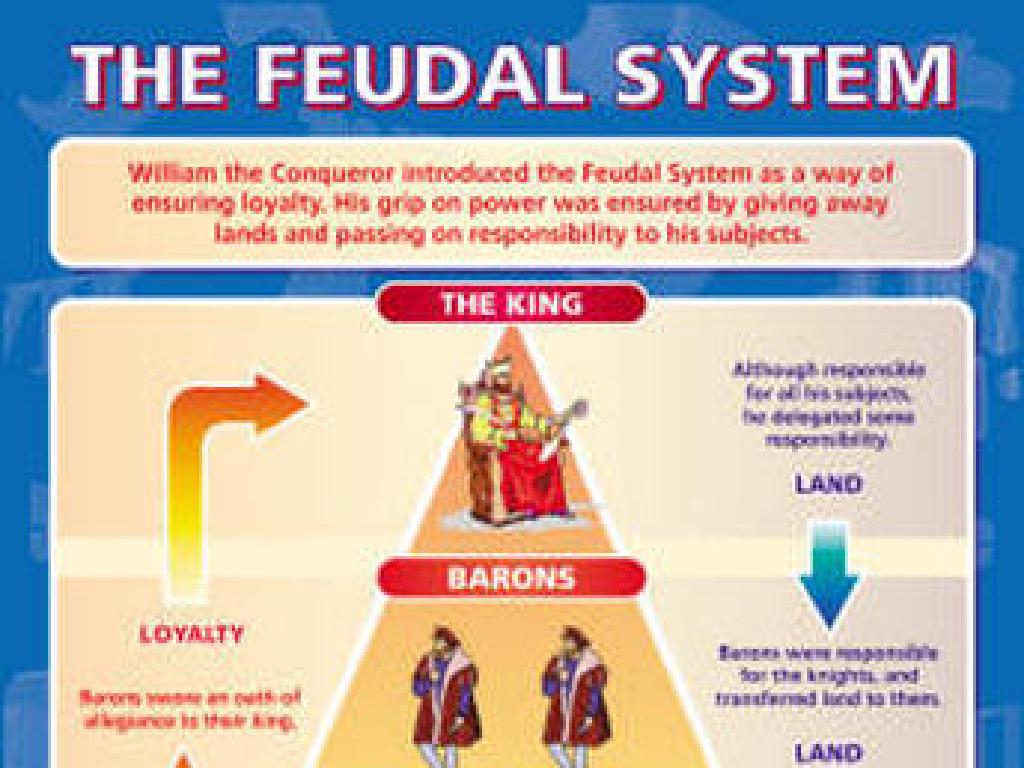Comparison Word Problems With Addition And Subtraction
Subject: Math
Grade: Fourth grade
Topic: Mixed Operations
Please LOG IN to download the presentation. Access is available to registered users only.
View More Content
Comparison Word Problems with Addition & Subtraction
– Explore comparison problems
– Addition & subtraction review
– Recall adding combines, subtracting finds difference
– Comparing using math
– Use , = to show relationships
– Practice with examples
– Solve problems like: ‘If Lisa has 3 more apples than Jim, how many does Jim have if Lisa has 7?’
|
This slide introduces students to comparison word problems within the context of mixed operations, focusing on addition and subtraction. Begin by reviewing the basic concepts of addition and subtraction, emphasizing that addition combines quantities while subtraction determines the difference between them. Explain how these operations can be used to compare quantities, using inequality symbols to represent the relationships. Provide clear examples and encourage students to visualize the problems. For instance, if Lisa has 3 more apples than Jim and she has 7 apples, students should subtract to find out how many apples Jim has. This interactive approach helps students grasp the concept of comparison in word problems.
Understanding Comparison Word Problems
– Definition of comparison problems
– Problems that require finding differences or excess amounts.
– Clues for addition or subtraction
– Look for keywords like ‘more than’, ‘less than’, ‘in total’ to decide if you add or subtract.
– ‘Who has more?’ scenarios
– Example: Jim has 3 apples, Tim has 5. How many more does Tim have?
– ‘Who has less?’ situations
– Example: Sara has 8 candies, 3 fewer than Luna. How many does Luna have?
|
Comparison word problems are a key part of understanding mixed operations in math. They involve comparing quantities to find out how much more one amount is than another or how much is left after subtraction. It’s crucial for students to identify keywords in the problem that indicate whether to add or subtract. For example, ‘more than’ usually signals addition, while ‘less than’ indicates subtraction. Provide students with various examples and guide them to underline or highlight the clues that help decide the operation. Encourage them to explain their reasoning for choosing addition or subtraction in each scenario.
Key Words in Comparison Problems
– ‘More than’ and ‘less than’
– These phrases indicate a comparison
– ‘Fewer’ and ‘greater’
– ‘Fewer’ for subtraction, ‘greater’ for addition
– ‘How many more/fewer?’
– Questions asking for the difference in amounts
– Identifying clues in problems
– Look for these words to find what to solve for
|
This slide is aimed at helping students recognize key words and phrases that signal comparison in word problems involving addition and subtraction. Understanding these terms is crucial for determining the correct operation to use when solving the problems. ‘More than’ and ‘less than’ often indicate subtraction, while ‘greater’ can hint at addition. ‘Fewer’ usually means something is being taken away, so subtraction is needed. When a problem asks ‘How many more?’ or ‘How many fewer?’, it’s asking for the difference between two amounts, which involves comparing them. Teach students to carefully read and identify these clues in word problems to decide the correct mathematical operation to apply.
Adding to Compare
– Combining groups to find totals
– Example: Tom’s and Lisa’s apples
– Tom has 3 apples, Lisa has 5. How many in total?
– Adding reveals total amounts
– Practice with similar problems
– Try: If Tom had 4 more apples, how many would they have together?
|
This slide introduces the concept of using addition to compare and find the total amount in two or more groups. Start by explaining that adding is a way to combine groups to see the bigger picture. Use the example provided to show a practical application of addition in a comparison word problem. Emphasize that addition helps us understand the total amount when we have separate groups. After explaining, encourage the students to practice with similar problems, adjusting the numbers to ensure they grasp the concept. For instance, if Tom had 7 apples and Lisa had 2, how many would they have together? This exercise will help solidify their understanding of addition in real-world scenarios.
Subtracting to Compare
– Understanding subtraction
– Taking one number away from another
– Real-life subtraction example
– Jim had 8 candies, gave 3 to Tim, how many left?
– Subtraction shows what’s left
– Find out remaining amounts after giving away
– Practice with word problems
|
This slide introduces the concept of subtraction as a means to compare amounts in word problems. Start by explaining that subtraction is taking one amount away from another. Use the example of Jim and his candies to illustrate how subtraction is used in everyday situations to find out how much is left after giving some away. Emphasize that subtraction helps us understand the remaining quantity. Encourage students to solve the example problem and come up with similar scenarios where they have to subtract to find the remaining amount. Provide additional word problems for practice to reinforce the concept.
Let’s Practice Together: Comparison Word Problems
– Solve a class comparison problem
– Decide: add or subtract?
– Look for keywords like ‘more than’ or ‘less than’
– Share our problem-solving strategies
– How did we figure out the solution?
– Discuss our answers together
|
This slide is designed for a collaborative class activity focused on solving comparison word problems involving addition and subtraction. Start by presenting a word problem to the class and guide them through the process of identifying whether to add or subtract by looking for key phrases. Encourage students to explain their thought process and the strategies they used to find the solution. After solving the problem, have a discussion with the class to compare answers and methods. This will help students understand different approaches to solving word problems and reinforce their problem-solving skills. Possible activities include solving problems in small groups, using manipulatives to visualize the problem, or creating their own comparison word problems.
Your Turn to Solve: Practice Time!
– Work on practice problems individually
– Determine the right operation to use
– Is it addition or subtraction? Look for clues in the word problem.
– Share your answers with the class
– Explain how you solved the problems
– Tell us the steps you took to find the solution.
|
This slide is designed for individual student practice with guidance. Students will work on a set of problems that require them to identify whether to use addition or subtraction to solve. After solving the problems, they will share their solutions with the class and explain their thought process. This activity encourages critical thinking and helps students articulate their reasoning. For the teacher: Prepare a worksheet with a variety of word problems. Guide students to look for keywords that indicate which operation to use. Circulate the room to assist as needed. After completion, facilitate a discussion where students explain their solutions. This reinforces their understanding and allows them to learn from each other’s strategies.
Class Activity: Math Detective
– Transform into math detectives
– Pair up for mystery problems
– Use clues to add and subtract
– Find differences or totals to solve cases
– Present solutions to the class
|
In this engaging class activity, students will work in pairs to become math detectives, tasked with solving comparison word problems. Provide each pair with a set of mystery problems that require them to use addition and subtraction to find clues and compare quantities. Encourage them to discuss their thought process and work collaboratively. After solving the problems, each pair will present their findings to the class, explaining how they used the clues to come to their conclusions. Possible activities include: 1) Solving a series of word problems that lead to a ‘mystery number’, 2) Comparing quantities to determine which is greater or lesser, 3) Using subtraction to find the difference between two numbers, and 4) Adding numbers to find a total in a story context. This activity will help students practice their arithmetic skills while also developing critical thinking and presentation skills.
Wrapping Up: Comparison Word Problems
– Key takeaways on comparison problems
– Learned to identify and solve problems comparing two quantities
– Applying knowledge to real-life scenarios
– Use this math in budgeting, shopping, or comparing distances
– Share your thoughts and challenges
– Each student thinks of one aspect they enjoyed or found tough
– Reflect on today’s learning
|
As we conclude today’s lesson on comparison word problems, it’s important to reflect on what we’ve learned. Understanding how to identify differences and similarities between quantities allows us to solve problems effectively. We can apply this knowledge in everyday situations like comparing prices or distances, which helps with making informed decisions. Encourage students to share their personal experiences from the lesson, including any interesting points or challenges they encountered. This reflection helps solidify their understanding and promotes a growth mindset. For the next class, prepare to discuss how these skills can be used in more complex scenarios.
Homework Challenge: Mastering Comparison Problems
– Practice comparison word problems
– Create your own word problem
– Think of a scenario involving comparing quantities
– Solve your custom problem
– Use addition or subtraction to find the difference
– Share with the class tomorrow
|
This homework is designed to reinforce students’ understanding of comparison word problems involving both addition and subtraction. Encourage students to practice with problems provided in class or from their textbooks. Then, challenge them to create their own word problems, which will require them to think critically about real-life scenarios where they compare two or more items. They should also solve the problems they create to ensure they understand the concept. The next day, have a session where students can share their problems with the class, fostering a collaborative learning environment where they can learn from each other’s creativity and problem-solving approaches.






